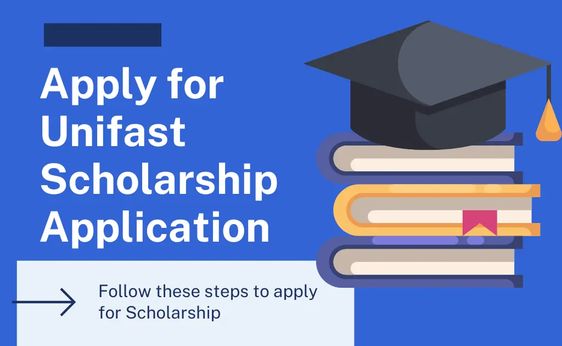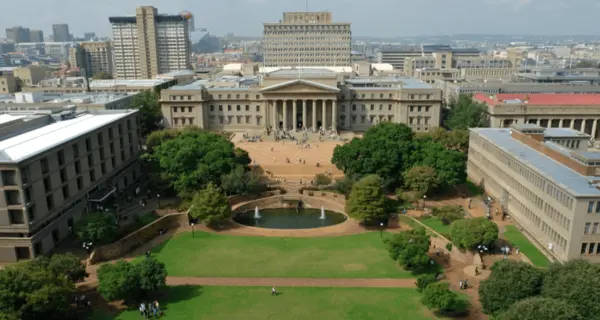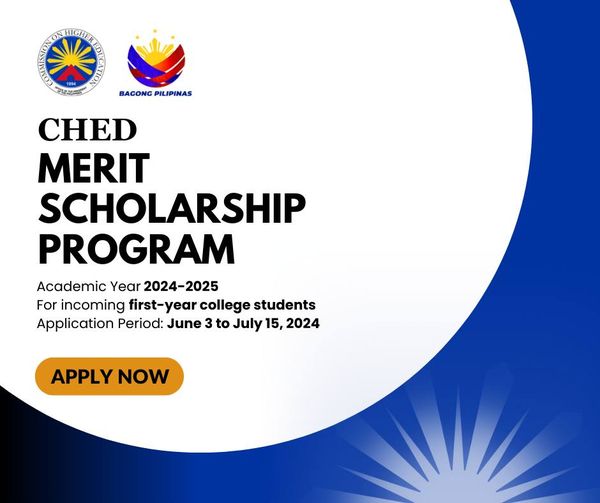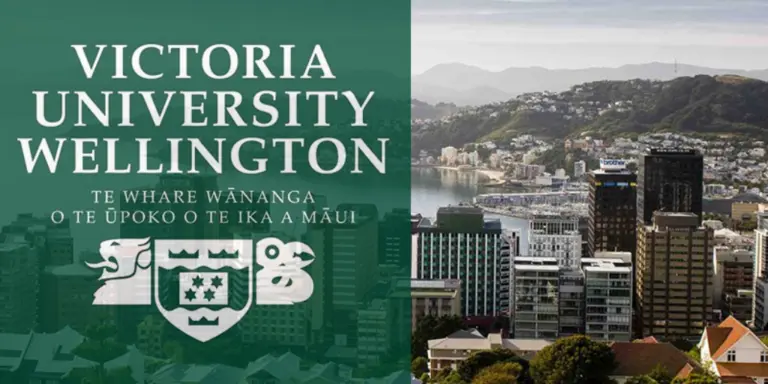The Unified Financial Assistance System for Tertiary Education (UniFAST) is a government initiative in the Philippines designed to streamline and enhance financial assistance for students pursuing higher education. Established under Republic Act No. 10687, UniFAST consolidates various scholarship, grant, and loan programs to ensure a more efficient and equitable distribution of funds.
UNIFAST Scholarship Program covers several key programs, including the Tertiary Education Subsidy (TES), which provides financial aid for tuition, textbooks, and living expenses; the Free Higher Education (FHE) program, which covers tuition and miscellaneous fees for students in state universities and colleges (SUCs) and local universities and colleges (LUCs); and the Student Loan Program (SLP), which offers short-term and long-term loans to students for education-related expenses.
The main beneficiaries of the UNIFAST Scholarship Program are students from low-income families, high-achieving students, and those enrolled in SUCs, LUCs, and private higher education institutions (HEIs). To apply, students must submit a completed application form, proof of financial need, and academic records.
By consolidating financial assistance programs, the UNIFAST Scholarship Program aims to make higher education more accessible, promote social equity, and support the academic and professional aspirations of Filipino youth.
1. Free Higher Education (FHE) (UNIFAST Scholarship)
The Free Higher Education (FHE) Program in the Philippines is a landmark initiative aimed at making tertiary education accessible to all Filipino students. Launched under Republic Act No. 10931, also known as the Universal Access to Quality Tertiary Education Act, the program seeks to provide free tuition and other school fees for students in state universities and colleges (SUCs), local universities and colleges (LUCs), and state-run technical-vocational institutions.
The FHE Program’s primary objective is to democratize access to higher education, particularly benefiting students from low-income families who may otherwise be unable to afford college education. By removing the financial barriers, the program aims to foster a more inclusive educational environment, ensuring that deserving students have the opportunity to pursue their academic and professional goals.
Aside from tuition, the program covers miscellaneous and other mandatory fees, providing significant financial relief to students and their families. This comprehensive coverage enables students to focus on their studies without the constant worry of financial constraints.
The implementation of the FHE Program is overseen by the Commission on Higher Education (CHED) and the Unified Student Financial Assistance System for Tertiary Education (UniFAST). These bodies ensure that the program’s benefits reach eligible students efficiently and transparently. Students benefit from the UNIFAST Scholarship through this means.
Since its inception, the FHE Program has been instrumental in increasing enrollment rates in higher education institutions and reducing dropout rates. It represents a critical step towards achieving educational equity in the Philippines, contributing to the development of a more educated and empowered workforce capable of driving national progress.
Objectives of the FHE Program
The primary objectives of the FHE Program are to:
- Enhance Access to Education: By eliminating tuition and other school fees, the program aims to increase the enrollment rates in higher education institutions (HEIs).
- Promote Equality: The program targets students from various socio-economic backgrounds, ensuring that even those from financially challenged families have the opportunity to attain a college degree.
- Improve Quality of Education: With increased funding and support for state universities and colleges (SUCs) and local universities and colleges (LUCs), the program also aims to improve the overall quality of higher education in the country.
- Strengthen the Workforce: By producing more college graduates, the program hopes to contribute to a more skilled and educated workforce, which can drive economic growth and development.
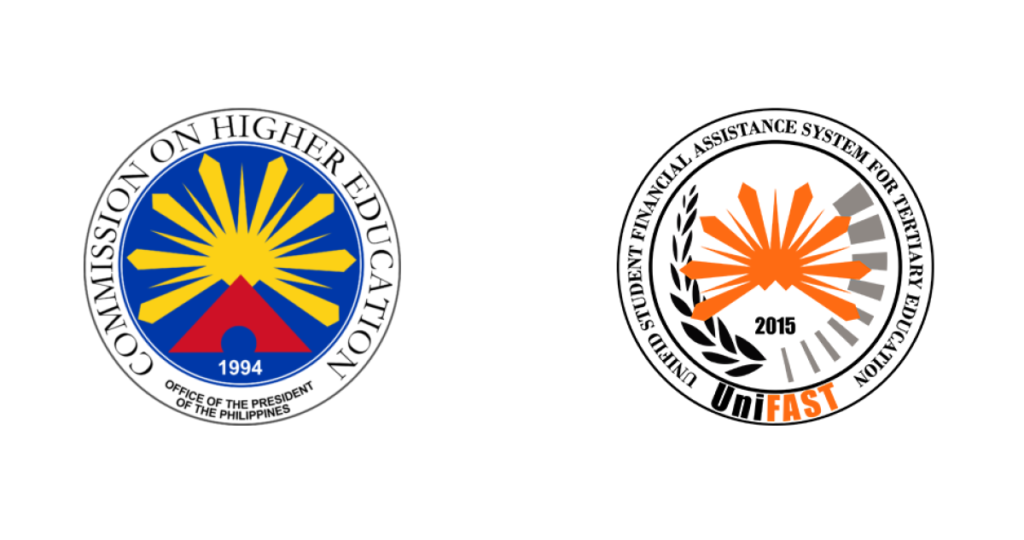
Benefits of the FHE Program(UNIFAST Scholarship)
The FHE Program offers numerous benefits, both for individual students and for the broader Philippine society:
- Financial Relief: The most direct benefit is the elimination of tuition fees and other school fees for eligible students. This significantly reduces the financial burden on students and their families.
- Increased Enrollment: With the removal of financial barriers, more students are encouraged to enroll in higher education institutions, leading to higher college participation rates.
- Equality and Inclusivity: The program ensures that students from disadvantaged backgrounds have equal opportunities to pursue higher education, promoting social mobility and reducing inequality.
- Quality Improvement: Increased government funding for SUCs and LUCs allows for improvements in infrastructure, faculty development, and academic programs, enhancing the overall quality of education.
- Economic Benefits: By producing a more educated workforce, the program contributes to the country’s economic development, as a higher percentage of the population becomes equipped with the skills and knowledge needed for various industries.
Who Is It Made For?
The FHE Program is designed to benefit Filipino students who meet the following criteria:
- Enrollment in Eligible Institutions: Students must be enrolled in state universities and colleges (SUCs), local universities and colleges (LUCs), or technical-vocational institutions (TVIs) accredited by the Commission on Higher Education (CHED).
- Undergraduate Programs: The program covers students pursuing undergraduate programs. Graduate and post-graduate programs are omitted.
- Citizenship: Only Filipino citizens are eligible for the benefits of the FHE Program.
- No Existing Bachelor’s Degree: Students who already possess a bachelor’s degree are not eligible for free tuition under this program.
- Good Academic Standing: While the program aims to be inclusive, students must maintain good academic standing as defined by their respective institutions to continue receiving benefits.
How to Apply
Applying for the FHE Program involves several steps:
- Choose an Eligible Institution: Ensure that the institution you wish to attend is an SUC, LUC, or TVI recognized by CHED. A list of eligible institutions can be found on the CHED website.
- Admission Requirements: Fulfill the admission requirements of your chosen institution. Each institution has its own set of requirements, which may include entrance exams, interviews, and submission of documents.
- Application for Admission: Complete the application process for admission to the institution. This typically involves submitting academic records, identification documents, and other necessary forms.
- Confirmation of Eligibility: Once admitted, confirm your eligibility for the FHE Program with the institution’s registrar or the designated office handling the program. You may need proof of citizenship and other documents to verify your eligibility.
- Maintain Good Standing: To continue receiving benefits under the FHE Program, maintain good academic standing as your institution requires. This may involve meeting specific grade requirements and adhering to the institution’s policies and regulations.
2. Tertiary Education Subsidy (TES) Program:
The Tertiary Education Subsidy (TES) Program in the Philippines is a government initiative designed to provide financial support to students enrolled in tertiary education. Launched as part of the Republic Act 10931, also known as the Universal Access to Quality Tertiary Education Act, the TES aims to ensure that financial constraints do not hinder capable students from pursuing higher education.
The TES Program offers subsidies to students in both public and private higher education institutions. Eligible beneficiaries include students from the poorest households, based on the National Household Targeting System for Poverty Reduction (NHTS-PR), as well as those studying in private institutions within cities or municipalities without public universities. Additionally, students with disabilities and those under special circumstances may qualify for this financial aid.
The subsidies provided by TES cover various educational expenses, including tuition and other school fees, textbooks, and supplies. Additionally, allowances for room and board, transportation, and other personal necessities are included, significantly reducing the financial burden on students and their families.
To apply for TES, students typically need to apply to their respective schools, which then forward the applications to the Commission on Higher Education (CHED) for evaluation. Successful applicants receive financial assistance directly, which they can use to cover their educational costs.
The TES Program plays a crucial role in promoting inclusive and equitable access to higher education in the Philippines. By alleviating financial barriers, it helps ensure that more students have the opportunity to pursue their academic and career aspirations, contributing to the country’s overall social and economic development.
Benefits of the TES Program
The TES Program offers a range of benefits designed to ease the financial burden on students and their families. These benefits include:
- Tuition and Other School Fees Coverage: For students enrolled in private higher education institutions (HEIs), the TES can cover tuition and other school fees up to PHP 60,000 per academic year.
- Stipends for Living Expenses: TES recipients from both public and private HEIs are entitled to an annual living allowance of PHP 40,000, distributed in two semesters. This allowance is intended to cover basic living expenses such as food, transportation, and books.
- Support for Students in Specialized Programs: Additional financial assistance is provided to students enrolled in specialized programs requiring higher fees, such as engineering, architecture, and medical courses.
- Assistance for Displaced Students: Students affected by natural disasters or armed conflicts may receive a one-time allowance of PHP 20,000 to support their continued education.
- Educational Assistance for Persons with Disabilities (PWDs): PWD students are eligible for an additional annual allowance of PHP 30,000 to support their specific educational needs.
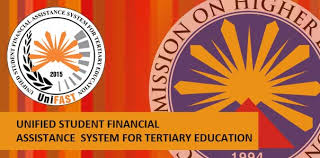
Eligibility Criteria
The TES Program is designed to support a wide range of students, particularly those from marginalized sectors. The eligibility criteria include:
- Enrollment in Recognized Institutions: Students must be enrolled in state universities and colleges (SUCs), local universities and colleges (LUCs), or private HEIs with programs recognized by the Commission on Higher Education (CHED).
- Household Income: Priority is given to students from households classified under the Listahanan 2.0, the National Household Targeting System for Poverty Reduction managed by the Department of Social Welfare and Development (DSWD).
- Educational Background: The program targets both new and continuing college students who meet the academic requirements set by their respective institutions.
- Residency and Citizenship: Applicants must be Filipino citizens and meet the residency requirements of the institution they are applying to.
How to Apply for the TES Program
Applying for the TES Program involves several steps, and students and their families must understand the process to maximize their chances of receiving assistance. Here’s a step-by-step guide:
- Check Eligibility: Before applying, ensure that you meet all the eligibility criteria mentioned on the official website. This includes verifying your household income and enrollment status in a recognized HEI.
- Gather Necessary Documents: Prepare the required documents, which typically include proof of enrollment, household income documents, academic records, and a duly accomplished application form.
- Submit the Application: Applications are usually submitted through the financial aid office of the student’s HEI. Ensure that all documents are complete and submitted.
- Wait for Confirmation: Once the application is submitted, it will be reviewed by the UniFAST Board. Successful applicants will receive a confirmation letter and instructions on how to claim their subsidies.
- Receive and Manage Funds: TES funds are typically disbursed in two installments, corresponding to the academic semesters. Students should manage these funds wisely to cover their tuition, fees, and living expenses.
3. Student Loan Program for Tertiary Education (SLPTE):
The Student Loan Program for Tertiary Education (SLPTE) in the Philippines is a government initiative designed to provide financial assistance to students pursuing higher education. Administered by the Commission on Higher Education (CHED), the program aims to alleviate the financial burden on students and their families, ensuring that economic constraints do not hinder academic aspirations.
SLPTE offers low-interest loans to eligible students enrolled in recognized tertiary institutions. These loans can be used to cover tuition fees, miscellaneous expenses, and other education-related costs. The program is particularly targeted at students from low-income families who demonstrate financial need and academic potential.
To qualify for SLPTE, applicants must meet specific criteria, including Filipino citizenship, enrollment in a CHED-recognized higher education institution, and a demonstrated financial need. The application process involves submitting necessary documents, such as proof of income, academic records, and a completed application form. Successful applicants are granted loans with favorable repayment terms, typically starting six months after graduation or upon gaining employment.
The SLPTE is instrumental in promoting access to higher education and supporting the government’s goal of increasing the number of college graduates in the country. By providing financial support, the program helps students complete their education, thereby enhancing their employability and contributing to the nation’s economic development.
Overall, the SLPTE plays a critical role in bridging the gap between financial constraints and educational attainment, empowering students to pursue their academic goals and build a better future.
Note: Kindly note that the application for the Student Loan Program is currently suspended till further notice.
Benefits of the Student Loan Program
The Student Loan Program offers a multitude of benefits that contribute significantly to the educational and personal development of students. Some of the key benefits include:
- Increased Access to Education: By providing financial assistance, the program enables students from low-income families to enroll in tertiary institutions. This democratizes access to education, ensuring that talent and hard work, rather than financial capability, determine educational opportunities.
- Financial Relief for Families: The program alleviates the financial burden on families who may struggle to support their children’s higher education. It allows parents and guardians to focus on other essential expenses without compromising on educational investments.
- Encouragement of Academic Pursuits: With the assurance of financial support, students are more likely to pursue courses and degrees that align with their interests and career goals, rather than being constrained by cost considerations.
- Development of Skilled Workforce: By facilitating higher education, the program contributes to the development of a more skilled and educated workforce, which is crucial for the country’s economic growth and competitiveness.
- Flexible Repayment Options: Many student loan programs offer flexible repayment terms, including grace periods after graduation, income-based repayment plans, and low interest rates, making it easier for graduates to manage their finances post-education.
Target Beneficiaries
The Student Loan Program is designed to cater to a diverse group of individuals who seek to pursue tertiary education but face financial challenges. The primary target beneficiaries include:
- Students from Low-Income Families: The program aims to support students whose families have limited financial resources, ensuring that economic barriers do not impede their educational progress.
- Underprivileged and Marginalized Sectors: This includes students from rural areas, indigenous communities, and other marginalized sectors who may have limited access to educational opportunities and financial support.
- Working Students: Individuals who are working part-time or full-time to support their education can benefit from the program, allowing them to focus more on their studies without the constant pressure of financial constraints.
- High-Achieving Students: Students who demonstrate exceptional academic performance but lack the financial means to pursue higher education are also key beneficiaries, ensuring that talent and merit are recognized and supported.
How to Apply for the Student Loan Program
- Loan Agreement Signing: If your application is approved, you will be required to sign a loan agreement outlining the terms and conditions, including the repayment schedule and interest rates.
- Disbursement of Funds: The loan amount will be disbursed directly to your educational institution or your account, depending on the program’s policy.
- Repayment:
- Grace Period: Most programs offer a grace period after graduation before repayment begins, allowing you time to secure employment.
- Repayment Plans: Choose a repayment plan that suits your financial situation, such as fixed monthly payments, income-based repayments, or extended repayment terms.
4. Free Tech-Voc Education and Training:
In recent years, the Philippines has made significant strides in providing free technical-vocational (tech-voc) education and training to its citizens. This initiative is part of the government’s broader strategy to address unemployment and underemployment, enhance workforce skills, and promote economic growth.
The Technical Education and Skills Development Authority (TESDA) spearheads the country’s efforts in tech-voc education. Established in 1994, TESDA is mandated to manage and supervise technical education and skills development in the Philippines. It aims to provide Filipinos with accessible, high-quality technical education and skills training, thereby improving their employability and livelihood opportunities.
Under the Universal Access to Quality Tertiary Education Act (RA 10931), TESDA has been instrumental in offering free tuition and other school fees to students enrolled in state-run technical-vocational institutions. This act also includes provisions for free training and assessment fees, further reducing the financial burden on learners.
Moreover, TESDA’s Training for Work Scholarship Program (TWSP) and the Special Training for Employment Program (STEP) have been pivotal in delivering free tech-voc education. These programs target marginalized sectors, including out-of-school youth, indigenous peoples, and persons with disabilities, ensuring that education and skills training are inclusive and equitable.
The curriculum in tech-voc education covers a wide range of fields such as automotive, electronics, information technology, health services, agriculture, and tourism, reflecting the diverse needs of the labor market. TESDA’s partnership with various industries ensures that the training provided is relevant and up-to-date with current industry standards.
In addition to traditional classroom instruction, TESDA has embraced flexible learning methods, including online training programs and mobile training labs, making education more accessible, especially in remote areas. These initiatives are part of TESDA’s response to the challenges posed by the COVID-19 pandemic, ensuring continuity of education and training amid restrictions.
The impact of free tech-voc education in the Philippines has been profound. Graduates of TESDA programs have demonstrated high employability rates, contributing significantly to the local and international labor markets. By equipping Filipinos with practical skills and competencies, the government aims to build a more resilient and dynamic workforce capable of driving the nation’s economic progress.
Benefits of Free Tech-Voc Education and Training in the Philippines
- Enhanced Employability: One of the primary benefits of free technical-vocational (tech-voc) education is the significant boost in employability for graduates. The Technical Education and Skills Development Authority (TESDA) designs its programs in close collaboration with various industries to ensure that the skills taught are aligned with current market demands. This alignment means that graduates are well-prepared for the workforce, increasing their chances of securing employment.
- Economic Empowerment: By providing individuals with the necessary skills and training, tech-voc education plays a crucial role in economic empowerment. Graduates can secure better-paying jobs, leading to improved living standards. Additionally, the programs support entrepreneurship, enabling individuals to start their businesses and create jobs for others.
- Inclusivity and Accessibility: Free tech-voc education is particularly beneficial for marginalized sectors of society, including out-of-school youth, indigenous peoples, and persons with disabilities. By making education and training accessible to these groups, the government helps bridge the gap between different socio-economic classes, promoting social equity.
- Industry-Relevant Skills: The training programs cover a wide range of fields such as automotive, electronics, information technology, health services, agriculture, and tourism. This diversity ensures that students can choose a path that aligns with their interests and the needs of the labor market, making their skills highly marketable.
- Flexibility: TESDA has incorporated flexible learning methods, including online courses and mobile training labs. This flexibility is crucial, especially for individuals in remote areas or those who cannot commit to traditional classroom schedules.
Eligibility Criteria
- Filipino Citizenship: Applicants must be Filipino citizens to be eligible for free tech-voc education and training under TESDA programs.
- Age Requirements: Generally, applicants must be at least 15 years old. However, some specific programs may have different age requirements.
- Educational Background: While there is no strict educational background requirement, certain programs may require applicants to have completed specific levels of education, such as high school.
- Marginalized Sectors: Priority is often given to members of marginalized sectors, including out-of-school youth, indigenous peoples, and persons with disabilities.
- Documentary Requirements: Applicants typically need to submit necessary documents such as birth certificates, identification cards, and, if applicable, educational certificates.
Gains from Free Tech-Voc Education and Training
- National Certificate (NC): Upon completion of a TESDA program, graduates receive a National Certificate (NC) that is recognized both locally and internationally. This certification validates their skills and competencies, enhancing their employment prospects.
- Practical Skills: The hands-on training provided in tech-voc programs equips students with practical skills that are immediately applicable in the workplace. This practical focus ensures that graduates are job-ready.
- Lifelong Learning: Tech-voc education fosters a culture of lifelong learning. Graduates are encouraged to continuously upgrade their skills through additional training and certification programs offered by TESDA.
- Entrepreneurship Opportunities: With the skills acquired, graduates can start their businesses. TESDA also offers programs specifically designed to support aspiring entrepreneurs, providing them with the knowledge and tools needed to succeed in their ventures.
- Improved Quality of Life: Ultimately, the skills and certifications gained from tech-voc education lead to better job opportunities, higher income, and an improved quality of life. Graduates are better equipped to support their families and contribute to their communities.
- Contribution to National Development: By producing a skilled workforce, tech-voc education contributes to national development. It supports various industries, drives economic growth, and helps the country compete in the global market.
- Personal and Professional Growth: Individuals gain confidence and self-reliance through the acquisition of new skills. This personal growth, coupled with professional development, opens up numerous opportunities for career advancement.
General Eligibility Criteria for the UNIFAST Scholarship
Eligibility for UniFAST Scholarship programs varies depending on the specific assistance being sought. Generally, applicants must:
- Be Filipino citizens.
- Be enrolled or intend to enroll in a recognized higher education institution in the Philippines.
- Meet specific academic and financial criteria, which may include maintaining a certain grade point average and demonstrating financial need.
Application Process
To apply for any of the UniFAST Scholarship programs, students typically need to:
- Check Eligibility: Review the specific requirements for the desired program.
- Prepare Documents: Gather necessary documents such as academic records, proof of income, identification, and other required paperwork.
- Submit Application: Apply through the CHED Regional Offices or designated UniFAST application portals.
- Await Approval: Applications are reviewed, and eligible students are notified of their acceptance into the program.
Frequently Asked Questions on the UNIFAST Scholarship Program
How much is the UniFAST Scholarship in the Philippines?
The UniFAST (Unified Financial Assistance System for Tertiary Education) Scholarship in the Philippines provides full funding for eligible students, covering tuition and other school fees.
Through the Tertiary Education Subsidy (TES) component, students can receive up to PHP 60,000 per academic year. For students enrolled in public universities, the subsidy can cover up to PHP 40,000 for living expenses and PHP 20,000 for educational expenses such as books, supplies, and transportation.
For students in private institutions, the amount may vary but is aimed at ensuring they have similar support levels. Additionally, there are special allowances for students with disabilities.
The exact amount and disbursement schedule can vary depending on the student’s specific circumstances and the institution’s policies, but the overall goal is to alleviate financial barriers to higher education.
What is the tertiary education scholarship in the Philippines?
Tertiary education scholarships in the Philippines provide financial assistance to students pursuing higher education. These scholarships, offered by the government, private organizations, and educational institutions, aim to make college more accessible.
Key government programs include CHED’s (Commission on Higher Education) Tulong Dunong, the Unified Student Financial Assistance System for Tertiary Education (UniFAST), and the State Universities and Colleges (SUCs) programs.
Private entities like foundations, corporations, and non-profits also offer scholarships based on academic merit, financial need, or specific criteria like field of study or community service. These scholarships cover tuition, allowances, and sometimes additional expenses like books and housing.
The application process typically involves submitting academic records, financial information, and personal statements. Scholarships are crucial in supporting students from low-income families, ensuring they can achieve higher education and improve their career prospects.
Who benefits most from free higher education?
Free higher education primarily benefits students from low-income families, who might otherwise be unable to afford college tuition. By removing financial barriers, these students gain access to educational opportunities that can lead to better job prospects and improved socio-economic mobility.
Society also benefits as a whole; a more educated populace can contribute to economic growth, innovation, and a more informed citizenry. Additionally, free higher education can reduce student loan debt, easing the financial burden on graduates and potentially leading to increased consumer spending.
Furthermore, by promoting equal access to education, free higher education helps to address social inequalities and can lead to a more equitable distribution of opportunities.
Employers benefit as well, as they have access to a more skilled and diverse workforce. Overall, free higher education can create a more inclusive, prosperous, and balanced society.
What grades do you need to get a scholarship in the Philippines?
To qualify for a scholarship in the Philippines, students typically need high academic achievements, often reflected in their grades. Many scholarships require at least a general weighted average (GWA) of 85% or higher, equivalent to a B or 2.5 on a 4.0 scale.
Competitive scholarships might demand even higher grades, such as 90% or an A, and sometimes specific grades in core subjects.
Additionally, students often need to maintain these grades throughout their studies to continue receiving the scholarship.
Besides academic performance, many scholarships also consider extracurricular involvement, leadership skills, community service, and financial need. It’s essential to check the specific requirements of each scholarship program, as they can vary significantly. Institutions like the Commission on Higher Education (CHED), private organizations, and universities offer a range of scholarships with varying criteria.
What is the monthly allowance for students in the Philippines?
The monthly allowance for students in the Philippines varies widely depending on several factors such as the city they live in, their living arrangements, and their lifestyle. On average, a college student might need around PHP 8,000 to PHP 15,000 per month.
This estimate includes costs for food, transportation, school supplies, personal expenses, and occasionally, rent if they live away from home.
In Metro Manila, the cost can be higher due to the expensive cost of living, while in provinces, the allowance can be significantly lower.
Some universities provide financial aid or allowances for scholars which can range from PHP 2,000 to PHP 5,000 per month. Additionally, some students receive financial support from government programs or non-governmental organizations, which also helps in managing their monthly expenses.
Conclusion on UNIFAST Scholarship Program
The UNIFAST Scholarship Program is a Philippine government program designed to support students in higher education. It provides scholarships, grants-in-aid, student loans, and other financial assistance to eligible students.
UNIFAST Scholarship Program aims to ensure equitable access to quality tertiary education, covering tuition and miscellaneous fees, as well as providing stipends for living expenses. The program targets students from low-income families and those enrolled in both public and private institutions.
UniFAST consolidates various government scholarship programs to streamline the distribution of financial aid and improve educational outcomes across the country.
